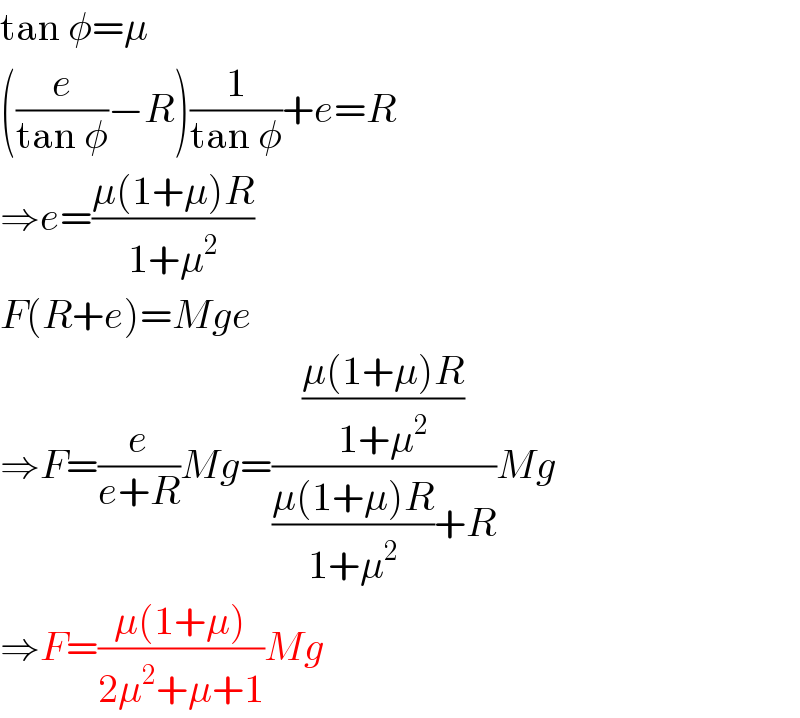
Question and Answers Forum
Question Number 110467 by ajfour last updated on 29/Aug/20

Commented by ajfour last updated on 29/Aug/20

Answered by mr W last updated on 29/Aug/20

Commented by mr W last updated on 29/Aug/20
![f_1 =μN_1 N_2 =f_1 =μN_1 f_2 =μN_2 =μ^2 N_1 F−Mg+N_1 +f_2 =0 F−Mg+(1+μ^2 )N_1 =0 ...(i) FR=(f_1 +f_2 )R F=μ(1+μ)N_1 ...(ii) F[1+((1+μ^2 )/(μ(1+μ)))]=Mg ⇒F=((μ(1+μ))/(2μ^2 +μ+1))Mg](Q110476.png)
Commented by ajfour last updated on 29/Aug/20

Answered by mr W last updated on 29/Aug/20

Commented by mr W last updated on 29/Aug/20

Commented by ajfour last updated on 29/Aug/20

